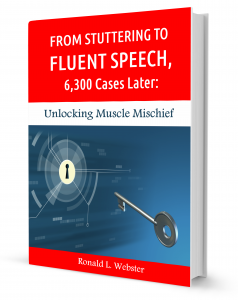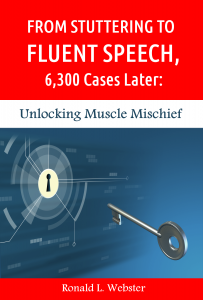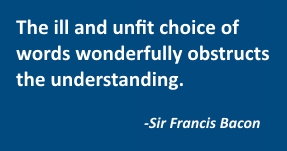The following continues the series of chapter excerpts from the breakthrough book about stuttering, From Stuttering to Fluent Speech, 6,300 Cases Later: Unlocking Muscle Mischief, written by Ronald L. Webster, Ph.D.

Dr. Webster is an internationally recognized expert on stuttering. He pioneered the concept of comprehensive behavioral stuttering therapy and has dedicated his career to helping individuals who stutter achieve and sustain the ability to speak fluently.
He is president of Hollins Communications Research Institute (HCRI – www.stuttering.org.), a nonprofit center he founded to investigate stuttering and develop treatment innovations. Dr. Webster is also a clinical psychologist and Professor Emeritus of Psychology at Hollins University in Roanoke, Virginia.
CHAPTER 7 EXCERPT
Conditions That Generate Fluent Speech in Stuttering
 …Whispering is yet another fluency-inducing condition. When a speaker whispers, the vocal folds are held apart and air is passed through the vocal tract, where it becomes turbulent and yields the characteristic sound of this activity. It has been observed that stutterers become fluent while whispering (Bruce and Adams, 1978; Cherry and Sayers, 1956; Commodore and Cooper, 1978; Perkins et al., 1976).
…Whispering is yet another fluency-inducing condition. When a speaker whispers, the vocal folds are held apart and air is passed through the vocal tract, where it becomes turbulent and yields the characteristic sound of this activity. It has been observed that stutterers become fluent while whispering (Bruce and Adams, 1978; Cherry and Sayers, 1956; Commodore and Cooper, 1978; Perkins et al., 1976).
White-noise masking (WNM) has been found to generate fluent speech in stutterers when the signals are presented through headphones at amplitudes in the range of 95 to 98 decibels (dBA). White noise is an audio signal that consists of equal-power, randomly generated acoustic signals from across the frequency spectrum. We hear white noise as the “sh” in “shoe.” The effect of the noise condition is immediate and clearly observable. An audio amplifier can be used to adjust the overall amplitude of the sound as it is presented in a sound field or through headphones.
A number of studies have demonstrated that WNM yields reduced disfluencies in stuttering (Cherry and Sayers, 1956; Maraist and Hutton, 1957; Burke, 1969; Murray, 1969). Additional studies (Sutton and Chase, 1961; Webster and Dorman, 1970) used four different conditions that varied the manner by which WNM was presented: (1) noise onset presented contingent upon initiating phonation; (2) noise offset made contingent upon initiation of phonation; (3) continuous noise; and (4) a no-noise condition. The results were quite striking in as much as each of the three noise conditions produced significantly less stuttering than the no-noise control condition.
I believe that there is an important question that was not resolved by the authors of these experiments…
[end of excerpt from Chapter 7]
For more information about From Stuttering to Fluent Speech, 6,300 Cases Later: Unlocking Muscle Mischief, visit Amazon.com. To learn more about HCRI stuttering therapy, click here: www.stuttering.org.


.jpg)

 Stuttering is one of the most misunderstood and mistreated of human disorders. In his book,
Stuttering is one of the most misunderstood and mistreated of human disorders. In his book, 


 I believe that much of the work that has been done on stuttering also involves major problems with words. I am not referring here to the fact that the stutterer has problems in his or her production of words.
I believe that much of the work that has been done on stuttering also involves major problems with words. I am not referring here to the fact that the stutterer has problems in his or her production of words.











